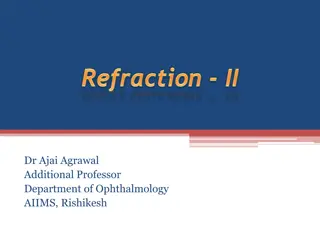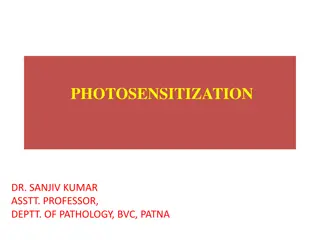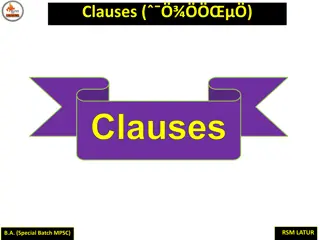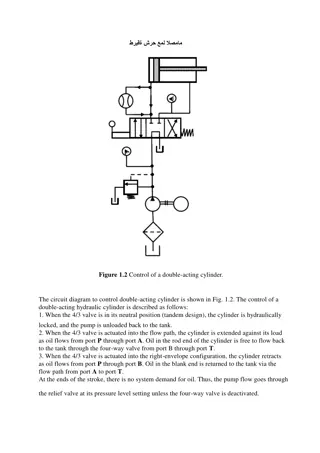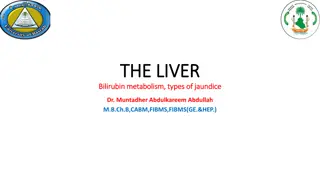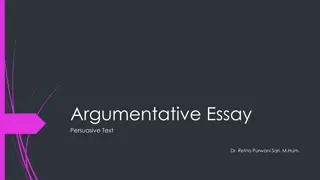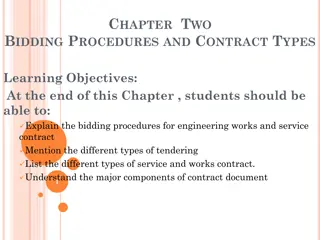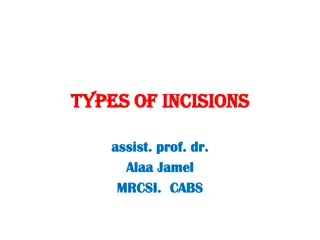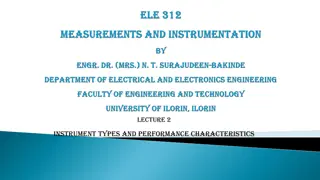Understanding Astigmatism and Its Types
Astigmatism is a common refractive error where light entering the eye fails to focus on the retina, resulting in blurred vision. This condition is characterized by variations in the shape of the cornea or lens, leading to disturbances in vision. There are two types of astigmatism: regular and irregular. It is often associated with other eye conditions like nystagmus, cataracts, and more.
Download Presentation

Please find below an Image/Link to download the presentation.
The content on the website is provided AS IS for your information and personal use only. It may not be sold, licensed, or shared on other websites without obtaining consent from the author. Download presentation by click this link. If you encounter any issues during the download, it is possible that the publisher has removed the file from their server.
E N D
Presentation Transcript
CENTURION UNIVERSITY OF TECHNOLOGY AND MANAGEMENT ASTIGMATISM AND ITS TYPES
EMETROPIA Emetropia ( optically normal eye) can be defined as a refraction wherein the parallel ray of light coming from infinity are focused at the sensitive layer of retina with the accommodation being at rest
AMETROPIA Ametropia is defined as a state of refraction wherein parallel rays of light coming from infinity ( with accommodation is at rest) are focused either infront or behind the sensitive layer of retina , in one or both the meridian. Ametropia includes the following- Myopia Hypermetropia Astigmatism
Components of ametropia The overall refractive state of the eye is determined by four component: Corneal power ( ranges from 40 to 45 D , mean 43.0 D ) Anterior chamber depth ( mean 3.4 mm ) Crystalline lens power ( ranges from 15 to 20D in its nonaccomodative state ) and Axial length ( mean 24 mm )
DEFINITION Astigmatism is a type of refractive error where in the refraction varies in the different meridian. Astigmatism is a defect in which light entering the eye is unable to be brought to a single focus on retina resulting in blurred vision at all distance .
It simply means that there is a variation and disturbance in the shape of the cornea or lens . It is usually due to an Irregularly shaped cornea Scarring of the cornea Abnormalities in the crystalline lens
Some eyes condition are seen along with astigmatism as - Nystagmus Cataract Ptosis Retinis pigmentosa Albinism Inflammation Degeneration
TYPES OF ASTIGMATISM There are 2 types of astigmatism :- Regular astigmatism Irregular astigmatism 1. 2.
REGULAR ASTIGMATISM The astigmatism is regular when the refractive power changes uniformly from one meridian to another.
ETIOLOGY Corneal astigmatism Lenticular astigmatism Retinal astigmatism 1. 2. 3.
Corneal astigmatism It is the result of abnormality of the curvature of cornea. It is usually congenital Acquired corneal astigmatism is often irregular Causes- Congential curvature astigmatism Keratoconus Trauma to the cornea or lens After cataract operation
Lenticular astigmatism Mainly due to - Congential abnormality of lens Refrative index of lens Congential or traumatic sublaxation of the lens
Retinal astigmatism Due to oblique placement of macula It can be corrected by visual aid
Types of regular astigmatism It is subdivided into four types- With-the-rule astigmatism Against-the-rule astigmatism Oblique astigmatism Bi-oblique astigmatism
With-the-rule astigmatism Refractive power of the vertical meridian is greatest The vertical meridian is steepest than horizontal meridian Eyes see vertical lines more sharply than horizontal lines Requires concave cylinders at 180+/-20 degrees Or convex cylinders at 90+/-20 degrees
Against-the-rule astigmatism The Refractive power of the horizontal meridian is greatest than the vertical meridian The horizontal meridian is steepest than vertical meridian Eyes see horizontal lines more sharply than vertical lines Requires concave cylinders at 90+/-20 degrees Or convex cylinders at 180+/-20 degrees
Oblique astigmatism In which the two principal meridian lies somewhere between the axis defining either with-the-rule or against-the-rule astigmatism Complementary ( 45 in one merdian, 135 in other meridian)
Bi-oblique astigmatism Principal meridian are not at right angle One at 30 , other at 100
Optics of regular astigmatism Light entering the eye cannot converge to a point focus but form focal lines Configuration of rays refracted from astigmatic surface-( strums conoid) Lens with the cylinder produces as astigmatic focus contain vertical lines, corresponding to the focus of the horizontal principal meridian and horizontal focal line corresponding to the focus of the vertical principal meridian.
The region between these two lines in known as conoid of strums. At the dioptric mid point between these two focal line , the astigmatism focus forms a circular patch known as circle of atleast confusion .
a) Simple hypermetropia astigmatism When refracted rays from one meridian takes focus on the retina and the refracted rays from other meridian takes focus behind the retina. b) Simple myopic astigmatism When refracted rays from one meridian takes focus on the retina and refracted rays from one meridian takes focus in front of the retina
c) Compound hypermetropic astigmatism In this condition of astigmatism refracted rays from both the meridians take focus behind the retina d) Compound myopic astigmatism In this condition of astigmatism refracted rays from both meridians take focus in front of retia
e) Mixed astigmatism- When refracted rays from one meridian take focus in front of retina and the refracted rays from other meridian take focus behind the retina
IRREGULAR ASTIGMATISM Irregular difference in curvature or refractive index of the optic components or misalignment of any optical component may lead to irregularity. It is often the result of trauma, pterygium, corneal scars and complications of refractive surgery. Another not uncommon condition is conical cornea ( keratoconus)
SYMPTOMS Distorted vision at distance and near Letter confusion Asthenopia or ocular fatigue Due to constantly squirting to clear up distorted vision Tilting of head Squinting Burning and itching
SIGN Decreased visual acuities at distance and near
CLINICAL TYPES Visual acuity tests - distance and near Autorefraction Keratometry Retinoscopy Most reliable source of information for cylinder power and axis Monocular subjective refraction , including Jackson cross cylinder
MANAGEMENT Cylinderical lenses and spherocylindrical lenses in spectacles and contact lenses for simple astigmatism and compound astigmatism, respectively. Refractive surgery Photorefractive keratectomy (PRK) Laser in-situ keratomileusis (LASIK)
THANKS FOR YOUR ATTENTION


